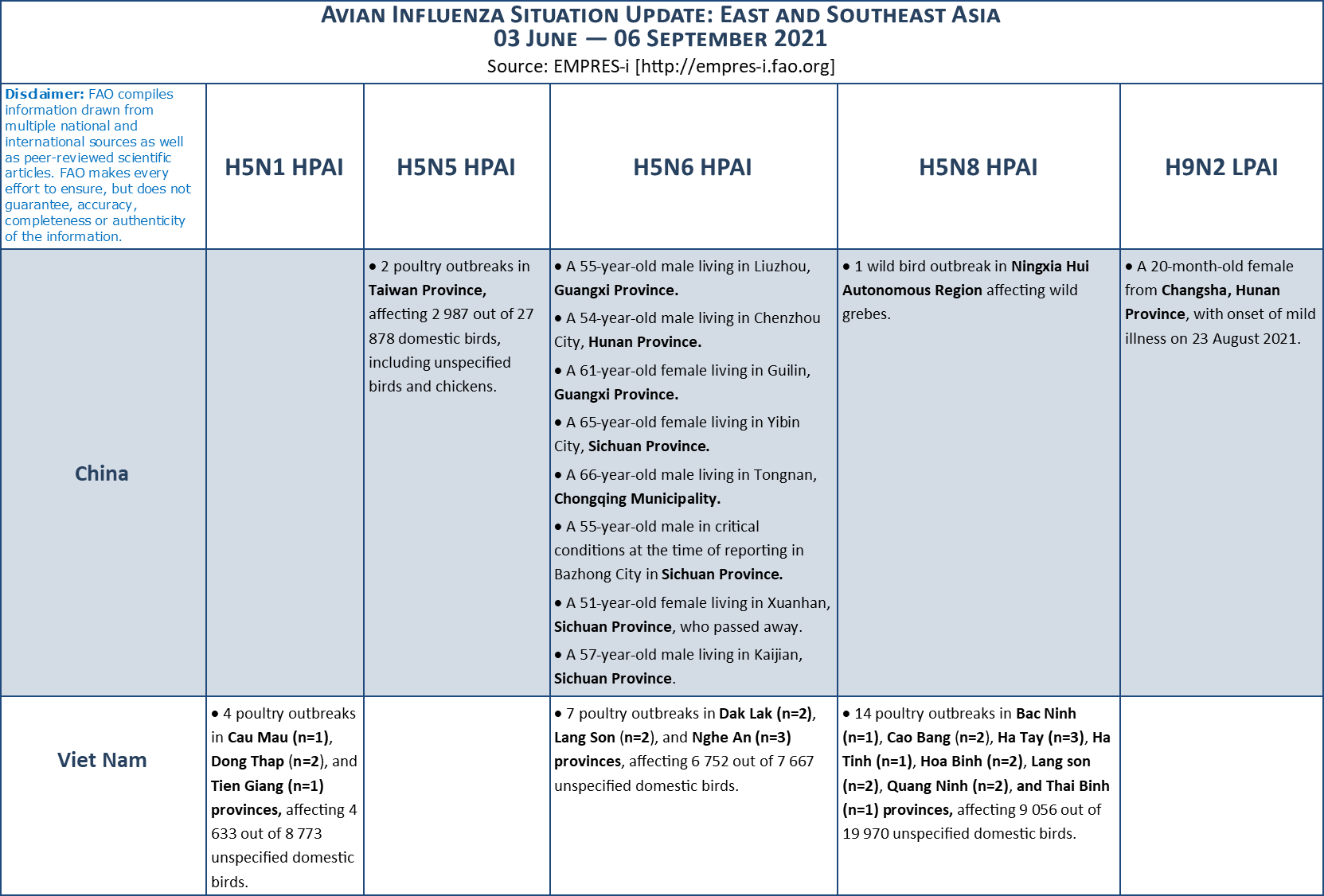FAO/EMPRES-AH is constantly monitoring the avian influenza situation worldwide and compiles information from multiple national and international sources as well as peer-reviewed scientific articles. Close collaboration with country and regional offices, the implementation of avian influenza field surveillance projects, and networks of expertise like OIE/FAO’s OFFLU (www.offlu.org) provide access to timely information on outbreaks, surveillance findings, and genetic similarities of circulating viruses or their virological features. This information is stored in the EMPRES Global Animal Disease Information System (EMPRES-i), a database that can be accessed online at empres-i.fao.org.

Avian Influenza in East and Southeast Asia from 03 June to 06 September 2021 ©EMPRES-i
During the period 3 June to 6 September 2021, four highly pathogenic avian influenza (HPAI) virus subtypes (H5N1, H5N5, H5N6, and H5N8) and one low pathogenic avian influenza (LPAI) virus subtype (H9N2) have been reported in East and South-East Asia. Viet Nam reported four H5N1 HPAI outbreaks in Cau Mau (n=1), Dong Thap (n=2), and Tien Giang (n=1) provinces, affecting 4 633 out of 8 773 unspecified domestic birds, and seven H5N6 HPAI outbreaks in Dak Lak (n=2), Lang Son (n=2), and Nghe An (n=3) provinces. Since its recent introduction, H5N8 HPAI has been spreading geographically in Northern Viet Nam with 14 poultry outbreaks reported across eight different provinces, while China reported one H5N8 HPAI outbreak in wild grebes in Ningxia Autonomous Region located in the Northern part of the country. H5N5 HPAI virus is still circulating in Taiwan Province, China and caused at least two outbreaks in domestic birds including chickens over the reporting period.
Furthermore, China reported eight A(H5N6) human infections in Chongqing Municipality (n=1), Guangxi Autonomous Region (n=2), and Hunan (n=1) and Sichuan (n=4) provinces. All individuals either reported contact with domestic poultry or had visited a live poultry market. In addition, one A(H9N2) human infection was detected in a 20-month-old female from Hunan Province, with onset of mild illness on 23 August 2021.
Highly pathogenic H5N1, H5N2, H5N5, H5N6, and H5N8 viruses have demonstrated the ability to spread via migratory water birds.
We consider avian influenza activity to be lower in the period from June to September, however reports of outbreaks in poultry or detections in wild birds and humans are expected to increase over the coming months in the region.







